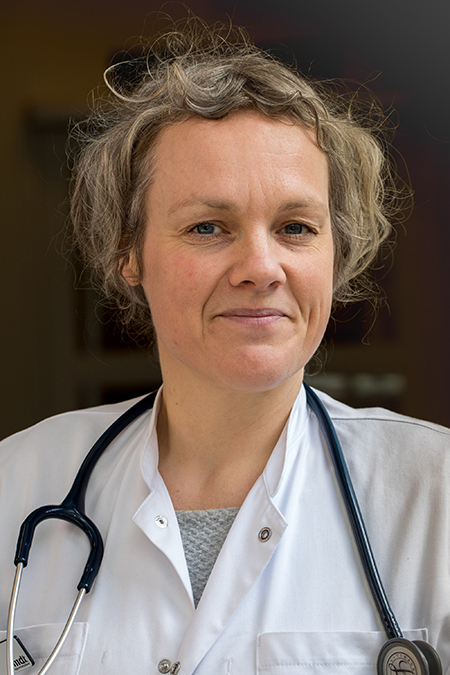Improving clinical management strategies in giant cell arteritis
Meet Berit Dalsgaard Nielsen
“Diagnostic, monitoring and prognostic tools have been lacking. Moreover, treatment options beside from steroids have been scarce. Consequently, patients have suffered from complications, especially loss of sight and more seldom stroke, due to delayed diagnosis.”
How can we find biomarkers for disease activity and prognosis in the field of rheumatology in order to improve treatment strategies? That is the question that drives Associate Professor Berit Dalsgaard Nielsen, born 1977, who focuses her research on giant cell arteritis (GCA).
GCA occurs in elderly patients and is an autoimmune inflammation in the cranial medium arteries and/or central large arteries. Early recognition and treatment are essential to prevent loss of sight but is hampered by unspecific presentation of the disease.
Berit Dalsgaard Nielsen is dedicated to clinical studies which aim at answering clinically relevant research questions and may have an impact on clinical management. Her recent research has focused on imaging diagnostics and the results has had an considerable impact on clinical guidelines for diagnostic evaluation in patients suspected of giant cell arteritis. Besides her clinical interest, curiosity and eager to explore, she enjoys the involvement of patients in her research.
More accurate diagnosis and better treatment
She and her colleagues will soon start recruiting GCA patients to evaluate dynamic PET/CT and PET/MR for GCA diagnosis. PET/MR may have the potential to diagnose patients more accurately in whom the conventional imaging tests are negative or inconclusive, and dynamic PET/CT is potentially more specific than conventional PET/CT.

Her group also look at vascular ultrasound during follow up since ultrasound could work as a tool to assess the effect of treatment and hence be implemented in RCT studies to evaluate new treatment strategies.
Recently, Berit Dalsgaard Nielsen and her colleagues have also initiated a national collaboration to establish a research database and biobank. A work with great potential to explore the prognosis of GCA - including risk factors, morbidity, mortality, and the effectiveness of different treatment strategies in a real-world setting.
A field that suffers from little research interest
Berit Dalsgaard Nielsen hopes to provide new research results which will improve the outcomes of GCA patients and points to the need for more research within the field.
“Diagnostic, monitoring and prognostic tools have been lacking. Moreover, treatment options beside from steroids have been scarce,” says Berit Dalsgaard Nielsen.
“Consequently, patients have suffered from complications, especially loss of sight and more seldom stroke, due to delayed diagnosis. Others have suffered from overtreatment with steroids. In the long term, patients are at risk of aortic complications, and we do not have algorithms to identify patients at risk” she adds.